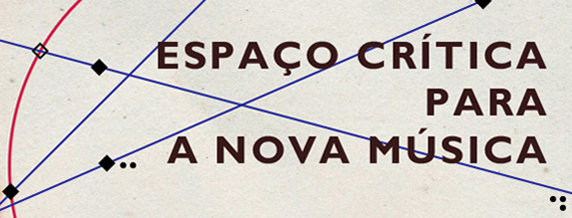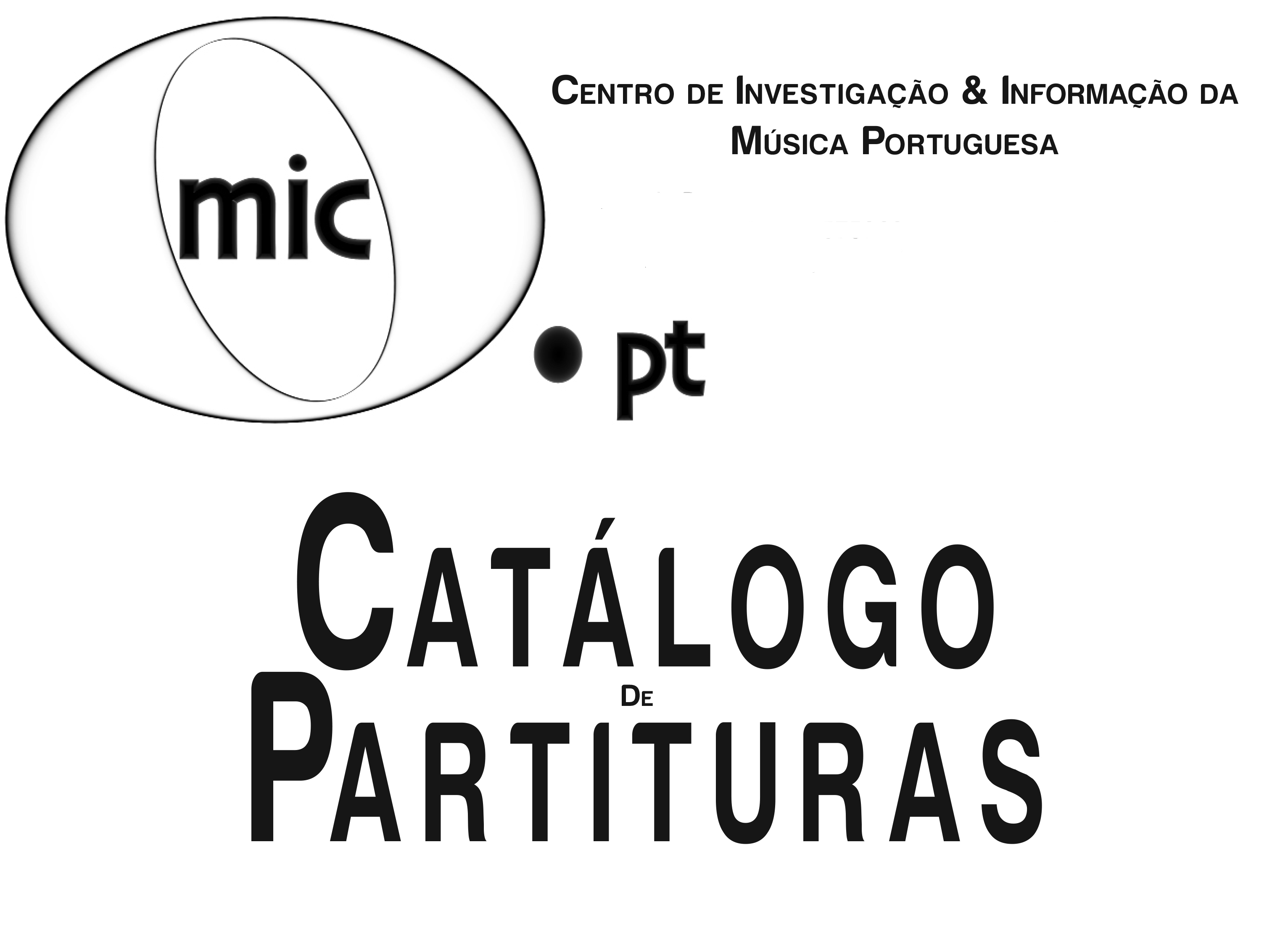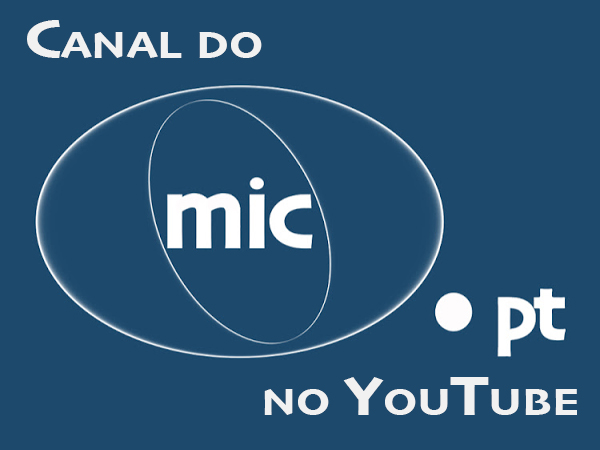It is through our ability to create that we construct and invent our future.
Through innovation and discoveries which it motivates, the act of creating, in general and artistic in particular, is the key for the humanity’s capacity to evolve. And I consider that it is of major and even vital importance that Art in society and apart from economic and market interests can be developed in order to reinforce this evolution in a global scale, for the benefit of all.
Its function is even more relevant in the atmosphere of profound crisis, both philosophical and civilizational, from which we suffer today (considerably more serious than the economic crisis). I think that Art constitutes a crucial and privileged mean to recover from this philosophical emergency, by which humanity is affected, as it constitutes in itself a true model of thinking in terms of civilization.[1]
Miguel Azguime was born in 1960 in Lisbon. Renowned for his versatility and for possessing a wide range of means within the contemporary language, his musical universe reflects an approach based on his multifaceted capacities as composer, performer and poet. This tri-dimensionality concomitantly challenges a certain, almost mystical vision of art.
The beginnings of his musical career are marked by participating in various jazz and improvisation groups, studying the recorder and percussion, as well as by attending various composition courses, for example during the Darmstadt Summer Courses. Miguel Azguime also participated in various seminars by Emmanuel Nunes, and studied privately with Tristan Murail in Paris.
A decisive moment in his career took place in 1982. It emerged from the contact with the flutist Pierre-Yves Artaud (Paula Azguime’s professor), who considerably developed new instrumental techniques and actively, in close collaboration with composers, encouraged the composition of new works for flute. This type of approach strongly marked the Miso Ensemble, a flute and percussion duo created by Paula and Miguel Azguime in 1985. Since the beginning it has distinguished itself through the exploration of a different form of making music, a different sound and timbre, a different type of sound organization, and the use of amplification and electronic means. The Miso Ensemble built a singular path on the Portuguese musical panorama, which was evidenced by the originality of the programmes presented in concert and through the diversity of the works created especially for the duo. According to the words of Jorge Lima Barreto “the Miso Ensemble figures among the most representative groups dedicated to Portuguese new music. Composers-performers with a unique philosophy and prolific activity without parallels, which includes participation in some of the most important international events of contemporary music, they have received a wide acknowledgement from the audiences as well as demanding critics.”[2] In parallel to being evidenced in their creations, the duo’s unique philosophy is also reflected in the name: MISO is a traditional ingredient in Japanese cuisine obtained by a millenary fermentation process of grains, soy beans and salt, which conveys and ideal of personal and collective life. MISO produced according to traditional processes means slow fermentation, which for Miguel Azguime is materialized as a symbol of perseverance, continuous maturing and looking for balance. This symbolism has been being propagated within various initiatives, which since the very beginning until today, Miguel Azguime together with Paula Azguime have been constructing.
From the 1990s this artistic duo, Paula and Miguel Azguime, have begun to develop their activity abroad in the framework of various collaborations with other performers and musicians. It was also a time when Miguel Azguime began to change his attitude towards composing music, from a freer approach within the Miso Ensemble to a more rigorous form of writing for other musicians and other formations, with an almost systematic use of live electronic means.
From this period one needs to highlight such pieces as "
Une Aile Pourvu qu'Elle Soit du Cygne" for piano, composed in 1993; "
Yuan Zhi Yuan" from 1997, commission by the Oriente Foundation for two solo singers, traditional Chinese instrumental group and choir, a work that reflects Miguel Azguime’s particular interest in ancient Chinese philosophy; “Para Lá dos Mares”, a set of electroacoustic pieces composed for the Pavilion of Sea Knowledge of the Expo 98; "
De l'Étant qui le Nie" for piano and live electronics from 1998, commissioned by the Portuguese Ministry of Culture.
In parallel to the gradual national and international acknowledgement of his works, presented on festivals dedicated to new musical creation, and performed by relevant ensembles, soloists and conductors in Portugal and around the world[3], Miguel Azguime remains dedicated to the promotion and diffusion of contemporary music, particularly the music by Portuguese composers – as founder of the Miso Music Portugal, as artistic director of the independent CD label Miso Records, and of the Música Viva Festival, as well as founder of the Miso Studio and the Sond’Ar-te Electric Ensemble.
Since 1995 he has also developed the Loudspeaker Orchestra, a project without precedent in the panorama of Portuguese music, and dedicated exclusively to the performance of electroacoustic works. As researcher Miguel Azguime has been working in the scope of live computer music, giving lectures and workshops in this field.
In 2003, together with Paula Azguime, he founded the Portuguese Music Research & Information Centre, a platform for communication and online database with detailed information on the Portuguese musical patrimony, from the present to the past, including documents, as well as edition and distribution of scores. The Centre is a public utility project reflecting Miguel and Paula Azguime’s concern with the continuity and general awareness of the Portuguese musical patrimony. At the same time this project affirms the tenacious and interventional objective of protecting Portuguese contemporary musical creation, and it provides a reflection on the social function of Art and artists. As Miguel Azguime tells us: ”The power, which the artists have while affirming their individuality, is by definition a political act. It is not possible to make an artist silent. Some of them were imprisoned and burnt, but there is no way to keep them quiet. And in the background one is always a vehicle of a current of thought, which can be gagged or ignored, but (…) it is not possible to put an end to it. (…) The artists’ work from the past has an absolutely considerable civilizational power and it is in this sense that I think that artists have enormous force…”[4]
In 2006 Miguel Azguime was resident composer of the DAAD programme in Berlin. This context allowed him to create and produce his multimedia opera, "Salt Itinerary", which constitutes, in a certain way, the culmination of a process of integration between writing poetry and composing music. This project also led to a renewed form of creative collaboration within the Miso Ensemble – as a result of development, implementation and consolidation of joint creative processes, which involve staging and image. These processes were initiated with Paula Azguime in the works "Yuan Zhi Yuan" and "O Centro do Excêntrico do Centro do Mundo" from 2002, and more recently in the children opera "The Little Girl Water Droplet", based on the original poetic story by Papiniano Carlos composed for the Children and Youth Choir of the Lisbon University in 2010; as well as in the new opera "A Laugh to Cry", whose avant-première performance will take place at the São Luiz Municipal Theatre in Lisbon, on July 17th and 18th. The world-premiere performance of the opera will take place on September 27 during the Warsaw Autumn International Festival of Contemporary Music, followed by a tour in Sweden in October. This opera was commissioned by the Warsaw Autumn International Festival of Contemporary Music, with the friendly support of the Ernst von Siemens Music Foundation.
Language and Aesthetics
I think that what I do and how I do it is really close to a work in a laboratory, not because I find myself among machines but because I live in the present, a time that gives me very specific knowledge. In other words, it is not the relation with technology for its own sake that interests me, but indeed the comprehension that I can have of the sound phenomenon, to a certain extent inherited from the others, but also belonging to me.[5]
On the contemporary music panorama the music of Miguel Azguime simultaneously enrols in the heritage of serialism and spectralism, assuming the scientific knowledge about the sound phenomenon, of its perception and its communication, as well as the consequent technological applications as paradigms for compositional practice. In this context the piece "De l'Étant qui le Nie" (1997-98) for piano and live electronics puts into perspective a journey through various technical and aesthetic approaches – form post-serialism to spectralism; but also the formal development based on a dramatic flux, which since then Miguel Azguime has successively incorporated into his music. At the same time "Derrière Son Double", piece composed in 2001, explores a double notion, in this case the harmonic and rhythmic pair of a determined material, as well as the opposition and complementarity between the acoustic instruments and the electronic sounds.
Miguel Azguime composes music for different formations – instrumental and / or vocal, with or without electronics, electroacoustic music, sound poetry, as well as music for exhibitions, sound installations, electroacoustic theatre, dance and cinema. Both his background and influences have quite eclectic roots, as the composer himself affirms: “My background, despite my education being the so-called classical music, was also Jannis Joplin, Jimi Hendrix, Jim Morrison, Grateful Dead, the Beatles, Rolling Stones, things I used to listen to when I was 11, 12, 13. After that came the symphonic rock from the 1970s, which influenced me a lot, with groups, to which even today I listen, and in which I recognize extraordinary qualities (…).”[6]
Miguel Azguime’s compositional style distinguishes itself in a language of structural rigour, on the one hand, and formal freedom, on the other. The multiform and radiant expressivity obtained through the richness of timbre, which characterizes his writing, as well as the clarity in the development of ideas assume a unifying function in his music. His work is frequently situated on the crossroads between instrumental and electroacoustic composition, originally two antagonistic practices and approaches, but which in this composer find a fascinating complementarity.[7] Emphasizes Miguel Azguime: “On the one hand, we are facing a new way of thinking and making music (…), on the other, we stand before a new technological instrumentarium with infinite possibilities. (…) Normally I start to compose from the emptiness waiting for the emergence of a small idea – any kind of musical material or sound object, which reveals itself as interesting and which on its own has pertinence to contain the embryo for development (…). Usually in the same work I use one or several models, depending on the cases and, therefore, the formal outline of the work depends on it.”[8]
At the same time Miguel Azguime calls upon experimentalism and research as assumptions for reinvention and discovery, in this sense emphasizing the influence of John Cage: “I understand experientialism not as a current, but as a stance of artistic research and study, independently of any particular aesthetics, preconizing risks and brawling new paths. (…) John Cage was fundamental precisely because of his concepts, which certainly had more influence than his music. The transversality of his thought permeated all artistic areas, and nowadays when through technology this multidisciplinary approach has more and more expression, the figure of John Cage turns out to be, and with good reason, even more emblematic.”[9]
The connections between the various activities exercised by Miguel Azguime, as composer, poet and performer gave origin to his particular interest in the domain, which the artists himself designates as “speech as music, music as speech”. It is indeed a search for meaning and balance between words and music, in other words, an attempt of approximation between the semantic and phonetic component of a given word and its sound parameters. The multimedia opera "Salt Itinerary" (holder of the UNESCO award Music Theatre NOW), with music, text and performance by Miguel Azguime, and video staging by Paula Azguime, arising as the continuity of the work developed within the Miso Ensemble, proposes and supports a new form of approaching opera, of developing a new dramaturgy looking towards a new era for the opera designated by him as New Op-Era. "Salt Itinerary" is also the materialization of Miguel Azguime’s idea on the act of creating and writing – writing music, writing poetry, gestural writing of the musician / actor and of his own image, and finally graphical writing where the voice is the extension of the poet’s body and thought.
Not only in opera but also in chamber or electroacoustic music Miguel Azguime’s predilection towards the concept of “speech as music, music as speech” has become more and more pertinent. Some of the most recent examples of this approach are the pieces "Conver(say)tions" from 2011, composed for the California EAR Unit, and "Mes Ententes pour 4 personnages" from 2012 written in response to a commission by the QUASAR – Quatuor de Saxofones from Canada. The latter one puts music in the context of a poem (the first element of composition), which seduces the form and orients its development in time. The voice leads the four saxophones through the verb determined by the phonetic spectra, whose meaning is given to us through the composition’s dramaturgy. This work is based on the double meaning of the word “accordance”, as listening and as dramaturgical conciliation between the four instruments. It goes without saying that “accordance” and “discordance” are, obviously, concurring and complementary categories.
The most recent Miso Ensemble’s project is the multimedia opera "A Laugh to Cry", with texts and music by Miguel Azguime and staging by Paula Azguime. This work is developed on the edge between dream and reality, between the visible and invisible, exploring some of the essential concerns of the human being, transported to our time in the context of the globalized world and being formalised in a reflection on the hegemonic power of memory destruction, devastation of the Earth, and speculating on the collapse of humanity. Developing the ideas materialised in the "Salt Itinerary", "A Laugh to Cry" reflects Miguel Azguime’s research on voice analysis re-synthesis and processing, aiming at creating a dynamic continuum between timbre, harmony and rhythm.
The art that is being created nowadays is an investment for the future. One does not know which purposes it serves nor where it will take us, yet, just as scientific research, but it is the only guarantee of our future and identity. It is a path that the true artists need to prepare and traverse inevitably, with an extraordinary and immense generosity. One needs to fight for them and defend them.[10]
Miguel Azguime's Official Website: azguime.net
Miguel Azguime on YouTube, Vimeo and SoundCloud
"Mes Ententes pour 4 perssonages" (2012)
QUASAR – Quatuor de Saxophones
"The Little Girl Water Droplet" (2010)
Children and Youth Choir of the Lisbon University
Ágata Mandillo – narrator
Erica Mandillo – conductor
"No Oculto Profuso" 2009
Nuno Pinto – clarinet
"Salt Itinerary" (2006)
"Derrière Son Double"
Sond’Ar-te Electric Ensemble
Pedro Amaral – conductor
Miguel Azguime's channel on VIMEO
Miguel Azguime on SoundCloud
---
1 Fragment of Miguel Azguime’s speech on “Art, Technology and the Future of Portugal” presented in the context of the Warm Up of the Festival In, Lisbon, May 30, 2013; English translation: Jakub Szczypa
2 Jorge Lima Barreto in the CD booklet by Miso Records: “Miso Ensemble, vol. I” (mcd001.03)
3 Such as: the Smith Quartet, Matosinhos String Quartet, Sond’Ar-te Electric Ensemble, California EAR Unit, QUASAR – Quatuor de saxofones, BBC Singers, the Remix Ensemble, Sing Circle, Camerata Aberta, Orquestra Metropolitana de Lisboa, ComeT Tokyo, Court-Circuit, Ensemble Recherche, Nuno Pinto, Ana Telles, Suzana Lidegran, Alain Damiens, Alain Neveux, Jean-Marie Cottet, Robert Glassburner, Reiner van Houdt, Frances M. Lynch, Angel Gimeno, Frank Ollu, Guillaume Bourgogne, Laurent Cuniot, Pedro Amaral, Pedro Neves, Peter Rundel, Stephan Asbury, Gregory Rose, Celso Antunes, Johannes Kalitzke, Jean-Sébastien Béreau, Pierre-André Valade, etc.
4 “Libertar o ar”, interview to Miguel Azguime by João Urbano and Jorge Leandro Rosa in: “Nada” Magazine, Lisbon, October 2010, p. 89; English translation: Jakub Szczypa
5 ibidem, p. 74
6 ibidem, p. 73
7 Tomás Henriques, “Azguime, Miguel” in: Enciclopédia da Música em Portugal no Século XX, direction by Salwa Castelo-Branco, Lisbon 2010, p. 91; English translation: Jakub Szczypa
8 Interview to Miguel Azguime in: Ângelo Martingo, “Contextos da Modernidade – um Inquérito a Compositores Portugueses”, Oficina Musical, Atelier de Composição 2011, p. 88 e 87; English Translation: Jakub Szczypa
9 ibidem, p. 86
10 Fragment of Miguel Azguime’s speech on “Art, Technology and the Future of Portugal” presented n the context of the Warm Up of the Festival In, Lisbon, May 30, 2013; English translation: Jakub Szczypa





